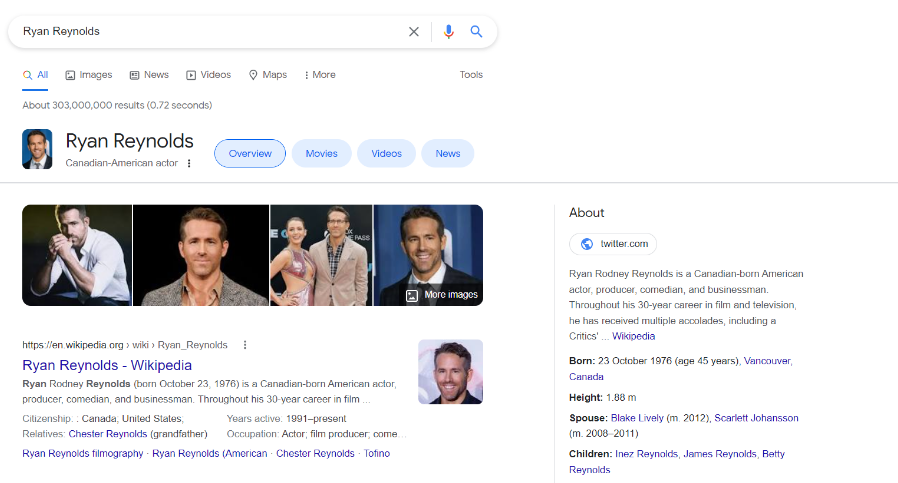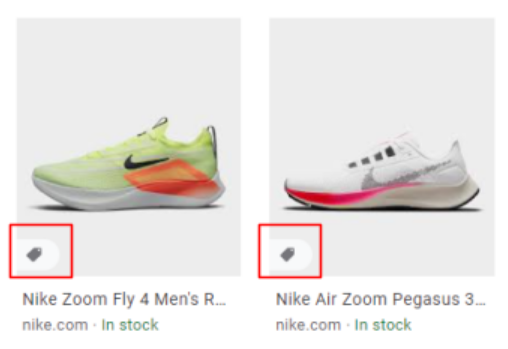An A-Z Guide to Structured Data for Search Engine Optimisation in 2022
Schema markup is a unique code for search engines to better understand your website content. Another name for it is structured data, it helps to provide users with more information about their searches via snippets at the top of the page. There are many different types of schema markups that may get confusing and the learning process may take a longer time. However, you can always approach a search engine optimisation (SEO) company in Singapore to get the job done for your business. Their search engine optimisation consultants can provide helpful advice to suit the needs of your business and facilitate implementation.
Here is one example of a schema markup:
Benefits of Schema Markups
There are multiple benefits to implementing schema markups and one of them is that it helps to add value to your SEO performance. Since these markups are vital for search engines to understand your content, it will help with ranking in search results and bring more organic traffic to your website.
Other benefits are:
- Extensive information on your products/services will be part of the rich snippets
- Webpage may appear at the Zero Position of the search results, resulting in higher click-through rates (CTR)
- Markups builds entities and aims to establish a relationship between them
9 Types of Schema Markups
In this blog post, I will be sharing 9 types of Schema markups that are most effective in helping you enhance your SEO performances!
1. Person markup
It provides information about an individual which will help Google identify them as an entity. In addition, by adding other schemas like products, Google will form a relationship between the person and product. By adding a person markup, it gives users more comprehensive information about a person such as their education, spouse, networth etc.
Recommended placement: About us page, Meet the Team page, Author’s biography page (blogpost)
2. Organisation markup
This markup can be implemented for your company, it gives Google basic information about your business. For example, if you are a company offering professional SEO Services Singapore with an office, by implementing this markup, your company will be featured with your address, opening hours etc. when someone searches for your company.
Recommended placement: Homepage, About us page, or Contact us page
*note that it is sufficient to apply only to ONE of these webpages to avoid confusing Google
3. Product markup
This markup is relevant if you run an e-commerce site, by implementing this markup, more details about your products like rating, price etc. will be shared to users and enhance the appearance of your items. In addition, it also allows your products to attain the ‘product’ badge on Google (refer to picture below).
Recommended placement: Product page
4. Breadcrumbs markup
This markup will help to enhance user experience on your website as they are able to see the page position of the current page that they are in. This will then be transferred to your search snippet and make it look more organised so more users will click on your link. It also improves your ranking on search results due to a more organised internal linking structure.
5. Article markup
This markup can be used for your news articles, blog posts, scholarly articles, reports etc. on your website. It provides Google with some content from your articles such as headlines, published date and others which may be featured in the zero position of the search results.
6. FAQ Page markup
For your website with an FAQ page, this markup can be applied. The questions and answers from your page will be taken and placed with the search results so that users can easily get the answers to their queries. It is important that your answers are concise to the questions as it would improve your ranking in the search results too.
7. HowTo markup
This type of markup can be applied if you have any how-to page on your website. A how-to page is like a tutorial for users and listed down in a step-by-step manner. For example, How to tie shoelaces. Besides just text, videos or images can also be used and will be shown on the featured snippet.
8. Recipe markup
As the name suggests, it should be applied if you are sharing cooking recipes on your website. It gives your recipe a chance to be featured at the top of the search results with other recipes for the same food. Similar to product markup, your recipe will also be able to attain the ‘recipe’ badge on Google.
9. VideoObject markup
Lastly, this schema can be applied to the videos that you have on your website. Information about your video such as description, duration and upload date will be taken and featured under the videos block in the search results under videos, google image or even google discover.
How to add Schema markups onto your website?
Now that you have read about the 9 schema markups that will help boost your SEO, you may be wondering how you can implement them onto your website. Basically, there are two options for you:
1. Markup generators
There are various markup generators but one that you can use is the Google Structured Data Markup Helper to help you apply your desired schema markup. This is a beginner-friendly method and no coding skills are required. The interface is very straightforward, just choose the schema type and elements of the website to be tagged. Then, a code will be generated for you.
2. Manual Markup
You can try to do it manually even if you have no coding experience, but it would be easier to apply with coding skills. As recommended by Google, one of the popular and easier to understand methods is JSON-LD. It has a very basic structure that usually includes the following information:
- @context – specify the vocabulary (schema.org)
- @type – type of schema used
- Name
- Author
- Datepublished
- Image – link of cover image
Common mistakes to avoid
If there are mistakes in Schema markups, it is considered useless and there will not be any impact on SEO performance as expected. Double-check your codes after you are done to avoid making careless mistakes, especially if you are doing it manually. These are some mistakes that can be avoided:
Common mistake #1: Do not add markup to non-existing content, only add to on-page content.
Common mistake #2: Do not add page-specific markup throughout your entire website as that is considered a penalty by google. For example, FAQ Page website should only be applied to the FAQ page, not other pages.
Common mistake #3: Do not violate Google guidelines. Make sure to read through their guidelines clearly to avoid problems.
That is all for this A – Z guide for On Page SEO schema markups! As mentioned above, there are many SEO companies in Singapore that can help you. If you are a freelancer or company offering SEO services, hope this blog provides you the information to get started with implementing your own schema markups.






